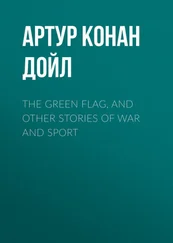The Canadians took over the Front on the evening of December 20 to fight amid the freezing ruins. In bitter struggles lone houses were captured and surrendered and recaptured. Only the piles of dead were changed. They were still fighting there on Christmas Day. The Paras brought up flame-throwers with a 60-yard range which they used in attack and defence through the ruined town.
The Canadian answer was to call in Sherman tanks as close-support wherever the narrow streets allowed, and six-pounder anti-tank guns that shot through or demolished ancient stone walls.
In this grotesque Christmas battle with its stark backdrop, it took the Canadians eight desperate days to capture Ortona. By then both sides were exhausted. The last Paras were finally cleared out on December 28, though for days afterwards Canadians were killed or maimed by the mines and booby-traps they had buried in the ruined homes of that desolate mountain town.
The capture brought that offensive to an end. The Army was tired, weakened by losses and could see no military objective ahead except – on the other coast – the major prize of Rome, but that was in the path of the Fifth Army. On the Adriatic we had fought ourselves to a winter stalemate.
Then an urgent message from AFHQ sent me jeeping through the mountains to Naples yet again – following the action. There I learned I was to command cameramen covering the landing of 50,000 British and American troops behind enemy lines, south of Rome. The intention was to cut Highway 6 and the railway supply-lines to the Monte Cassino front where German paratroops were still resisting strongly, to trap Kesselring’s Tenth and Fourteenth Armies, and finally to liberate Rome.
With Geoffrey Keating I drove out to Castellammare, the port across the bay from Naples where most of the armada was assembling, to place sergeant-cameramen with units in the first wave of our assault. We had to negotiate with the senior officer commanding the loading of the invasion fleet, because as usual there was not space for everyone who needed to go, and although we saw our role as important it was hard to compete against fighting units, gunners or ambulances.
To jolly the Colonel along, Keating suggested that I take a few personal pictures of him in action – gentle harmless flattery. Pleased with such attention he became more amenable, and subsequently agreed to most of our requests for space and accommodation.
It was curious to be so eager to join an expedition that offered applicants the probability of injury or death as the reward for success. It felt like struggling to get tickets for a First Night, when the winners would probably end up in the first casualty list of permanent Losers.
Afterwards Geoffrey said he would get my pictures developed. I explained that, as usual, I had no film in the camera. We could not take pictures of everyone we met, and it was doubtful whether we would ever see the Colonel again. This was a bit naughty, but practical; we could not burden our hard-pressed Developing Section with social shots not for publication. ‘Red-hots,’ we called them, and they never amused our shy colleague Len Puttnam – father of Lord Puttnam-to-be – who ran the developers and coped manfully with our output.
Geoffrey, more experienced than I, said ‘Fatal mistake. Now you’re going to run into that Colonel everywhere, for the rest of the war. You’ll always be making excuses.’ He was right – so I never did that again.
On January 21 ’44 an armada of 374 ships sailed out to sea, then turned to starboard and steamed north. This was Operation Shingle. We had a fair idea where we might be going because Neapolitan spivs on the Via Roma and around the docks had been selling postcards of Anzio, a place of which I had then never heard.
The weather was perfect, the sea smooth – but we knew German radio had been discussing an Allied landing behind their lines. We prepared for another Salerno bloodbath.
At nightfall troops on our ship wrapped themselves in blankets and tried to sleep on deck. In the wardroom, officers played poker for ridiculously high stakes, trying to get rid of cash. Just when there was no need for money I could not stop winning, of course – so landed with pockets bulging with lire which took months to spend. It was the first (and last) time I have faced that problem.
Our vast armada came to anchor off the small resort and port of Anzio – just as the Neapolitans had forecast. As we dropped anchor in a crisp dawn, braced for enemy reaction, I went below decks for my guide book, to learn that Anzio had been a flourishing commercial city in 490 BC and was the birthplace of the Emperor Nero and the home of Caligula. I do like to know where I’m invading.
Viewed from the deck of our LST at dawn it seemed a pleasant little fishing port bordered by low-rise blocks and villas along the coast, and some substantial patrician homes amid the pines and sand dunes. It had already been damaged by our supporting fire – and much worse was to come.
Along the coast, neighbouring Nettuno looked older, with wine caves at its heart – soon to be taken over by VI Corps as a secure HQ, with life-saving cellars attached. Caligula had wanted to turn Anzio into the capital of the Roman Empire, and Popes and nobles followed his enthusiasms. The fall of the Roman Empire led to Anzio’s decline for centuries, until the 1700s when Cardinal Antonio Pignatelli, returning by sea from Naples to Rome, sheltered from a storm in Nero’s old port and believed his life had been spared. He promised if he became Pope he would rebuild the place – and was a man of his word.
So Anzio had its ups and downs. Unfortunately, I arrived in time for a major Down. After our landing the port area was shelled and bombed by the Germans, night and day for four months. At least it became famous, once again.
To get here during the night our massive fleet had sailed past the Gustav Line and in the distance, Monte Cassino, which now lay 80 miles behind us. The harbour was suddenly busy with warships. Barrage balloons tethered to the larger craft floated protectively above our armada. Destroyers cut through the fleet, laying thick black smokescreens. Further out to sea big cruisers moved ponderously around in semi-circles, rocking as their thunderous broadsides supported our landing.
Red air raid warning flags flew almost permanently – yet we had some 2,000 aircraft in the theatre, the Luftwaffe only 350. Sometimes the RAF or the USAAF held off the attackers, but usually they got through to drop their bombs and hurtle away, low over the water.
The two Navies staged a useful diversion by bombarding Rome’s seaport, Civitavecchia, 75 miles further north. There they carried-out a fake landing so impressive that Kesselring ordered that all harbour facilities should be demolished immediately.
I went in with the 1st ‘White Triangle’ Division on to Peter Beach, just north of Anzio, a broad sandy expanse between sea and dunes stretching towards Ostia and the enticing target of Rome, a mere 33 miles away. The platoon I was landing with that sunny morning was confident and cheerful. The light return-fire had been spasmodic. They were all businesslike and, like me, beginning to feel they had done it all before and knew their way around a landing beach.
What they did not know, of course, was that during the next months at Anzio their division would lose 100 officers and more than 1,000 other ranks. Another 400 officers and 8,000 men would be casualties, or missing.
After our cheerful landing the division would lose 60 per cent of its officers, 50 per cent of its men, but as the warm water and soft clean sand of Peter Beach splashed up to meet our feet such a terrible future was, fortunately, unthinkable.
The US 3rd Division was landing on X-Ray Beach, south of Nettuno, where resistance was also light: the usual 88mm shells and air raids. Most of our early casualties were from wooden box mines hidden in the sand, which fooled the Royal Engineers’ metal-detectors.
Читать дальше












